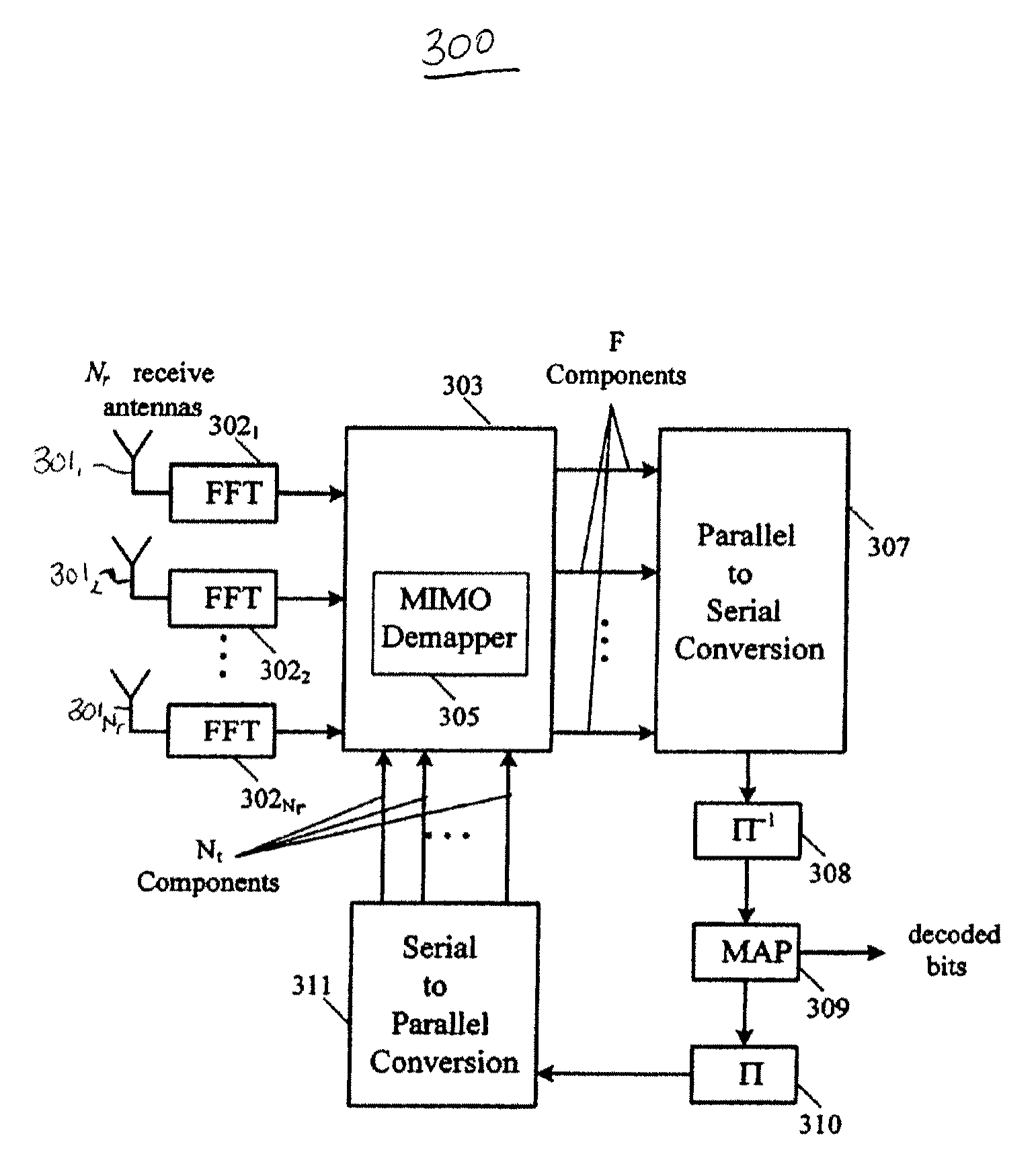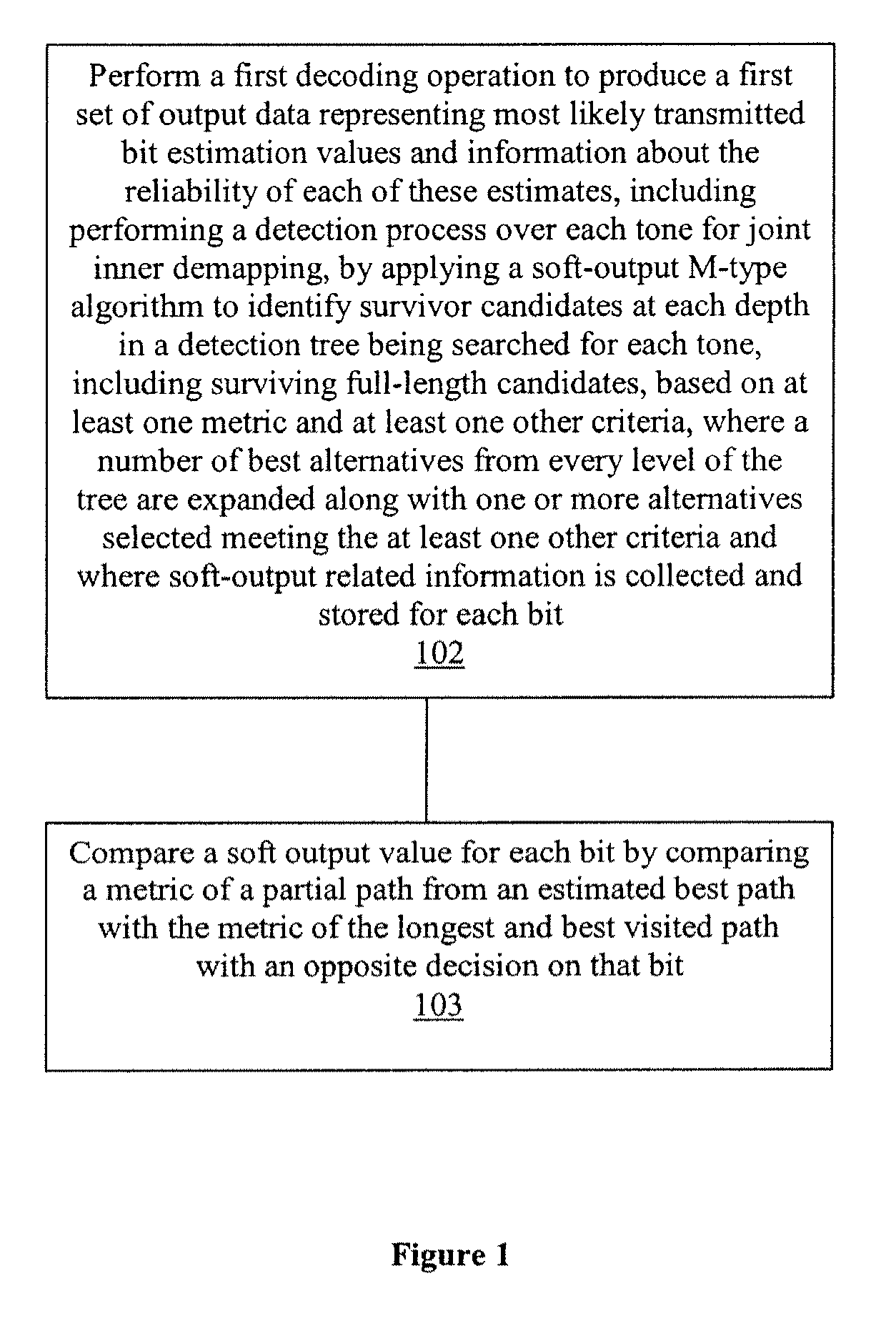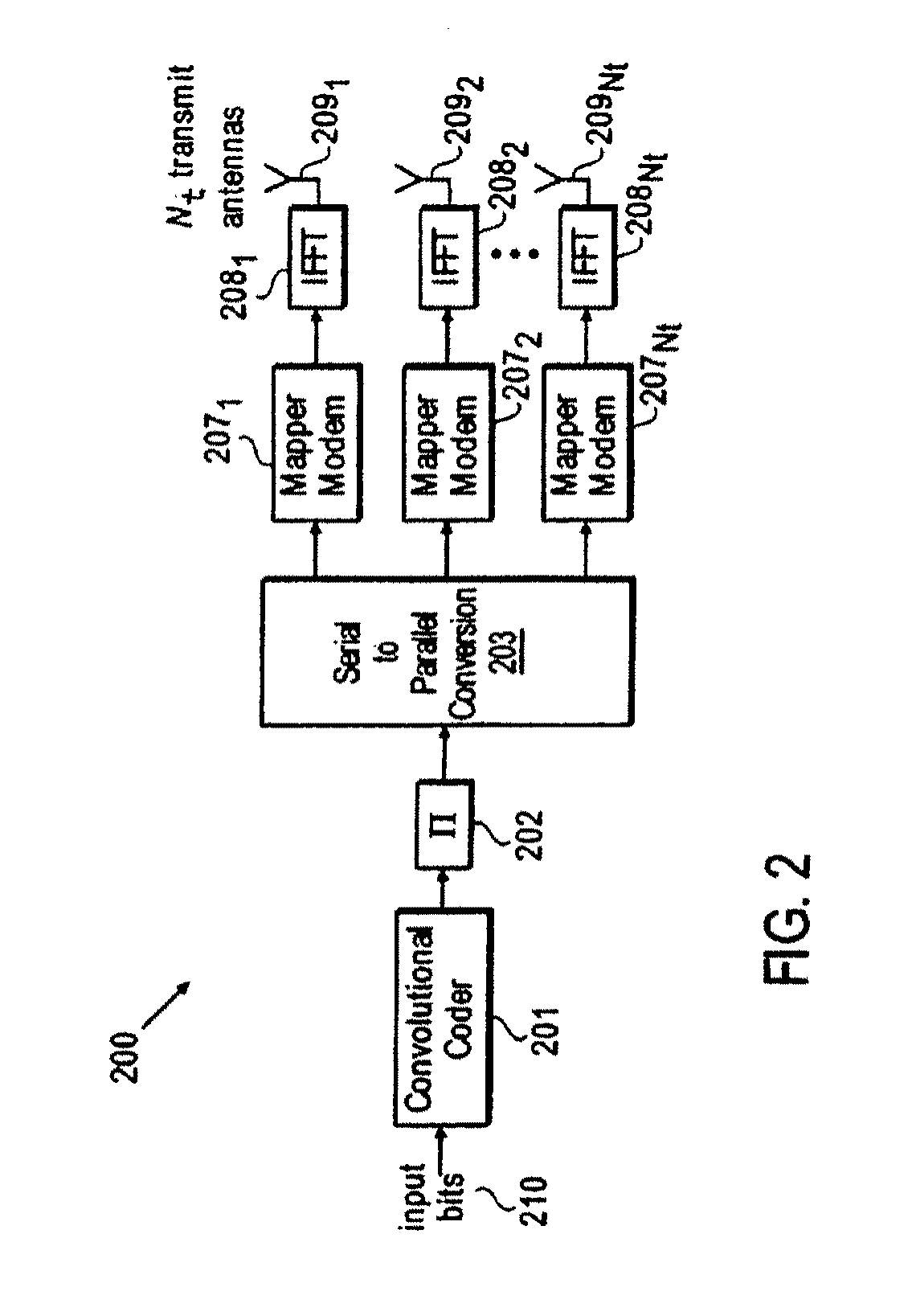Soft output m-algorithm receiver structures with generalized survivor selection criteria for MIMO systems
a receiver structure and soft output technology, applied in multiplex communication, orthogonal multiplex, baseband system details, etc., can solve the problems of drastic reduction of complexity, cost in bit-error-rate performance, and computational intractableness of the maxlogmap-based inner decoder
- Summary
- Abstract
- Description
- Claims
- Application Information
AI Technical Summary
Benefits of technology
Problems solved by technology
Method used
Image
Examples
Embodiment Construction
[0030]Embodiments of the present invention deal primarily with the forward link, i.e., the base-to-mobile direction of transmission and more specifically reduced complexity receiver structures for these systems. Methods and apparatuses are disclosed for adaptive reduced complexity receiver structures. These receiver structures consist of inner / outer decoder modules that exchange information. The receiver structures can be single or multiple-iteration structures. In one embodiment, the inner / outer decoding structures exploit M-algorithm type searches. Specifically, in one embodiment, the inner / outer decoding structures use different criteria in selecting the survivor candidates at every stage in the M-type algorithm. This favorably improves the soft-output information provided by the inner decoder.
[0031]In one embodiment, the soft-output MIMO inner-decoder makes adaptive use of a new class of soft output M-algorithms, (SOMA). This soft-output MIMO detector is applied on every tone (o...
PUM
 Login to View More
Login to View More Abstract
Description
Claims
Application Information
 Login to View More
Login to View More - R&D
- Intellectual Property
- Life Sciences
- Materials
- Tech Scout
- Unparalleled Data Quality
- Higher Quality Content
- 60% Fewer Hallucinations
Browse by: Latest US Patents, China's latest patents, Technical Efficacy Thesaurus, Application Domain, Technology Topic, Popular Technical Reports.
© 2025 PatSnap. All rights reserved.Legal|Privacy policy|Modern Slavery Act Transparency Statement|Sitemap|About US| Contact US: help@patsnap.com



